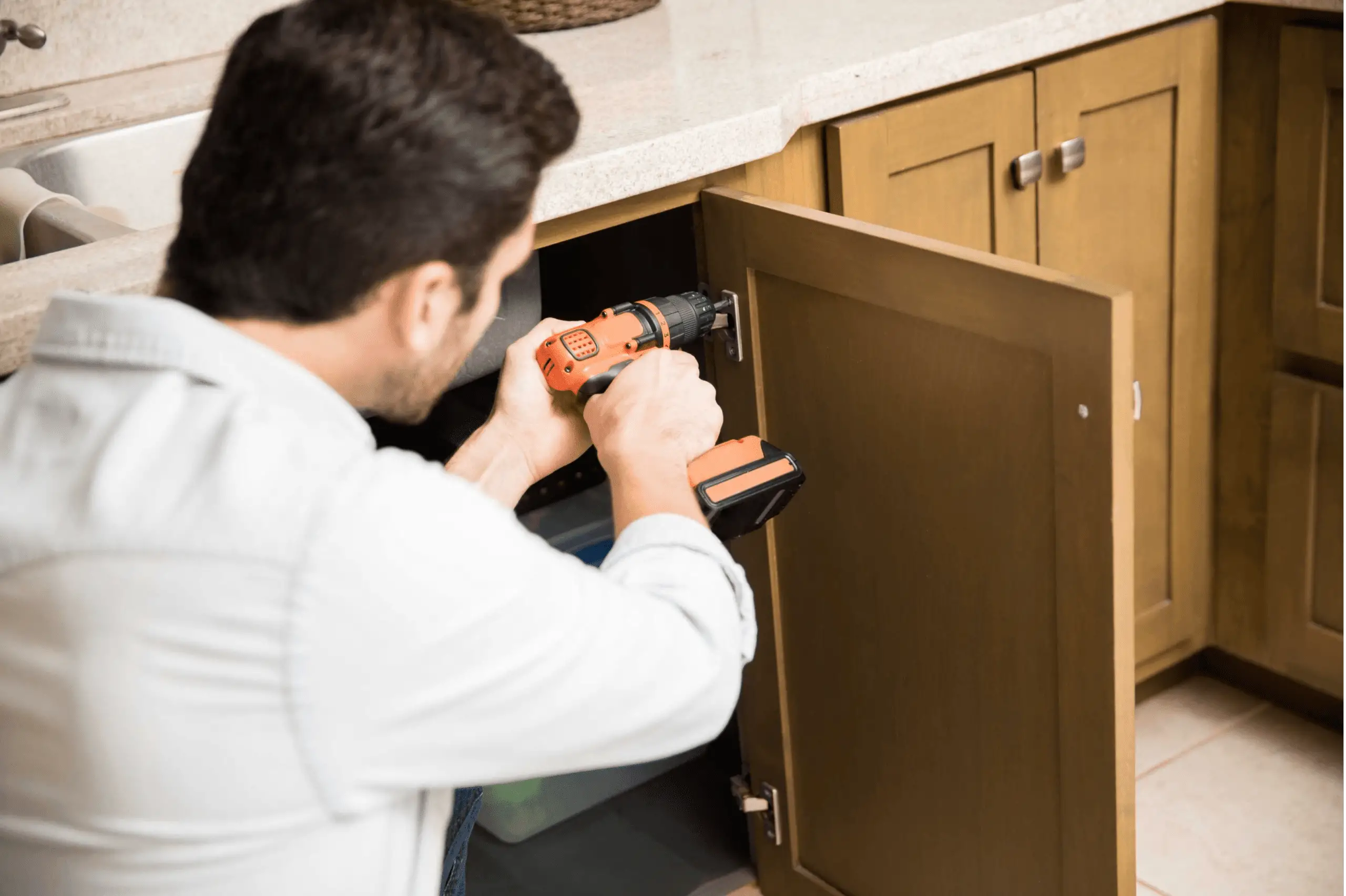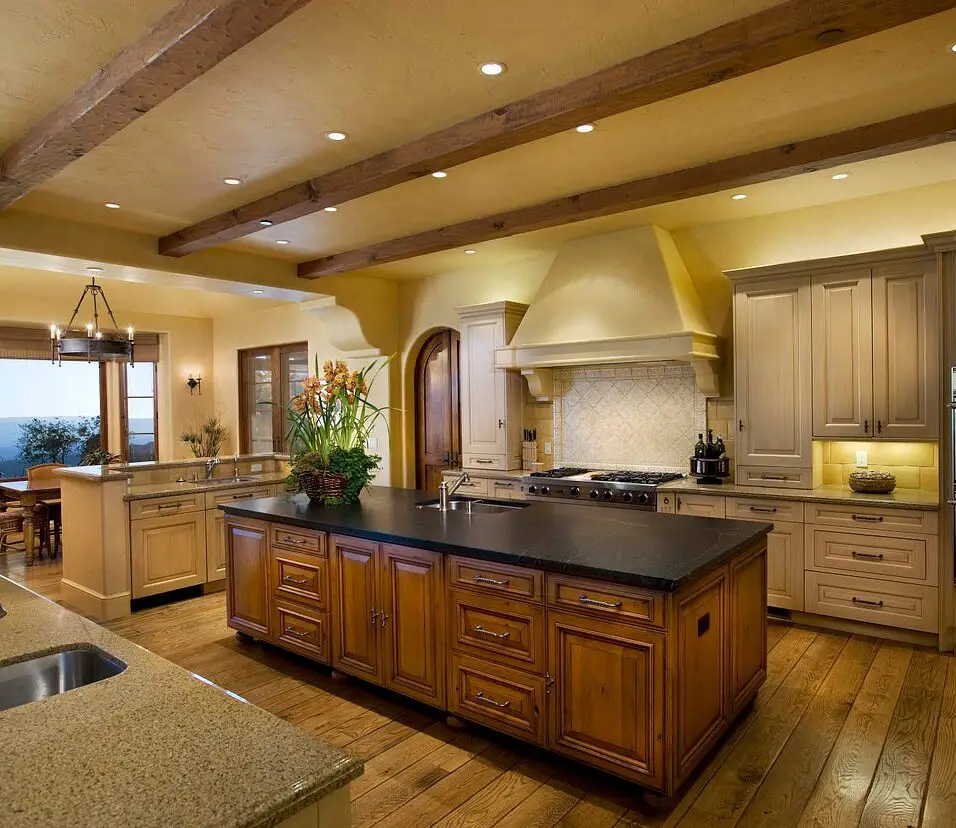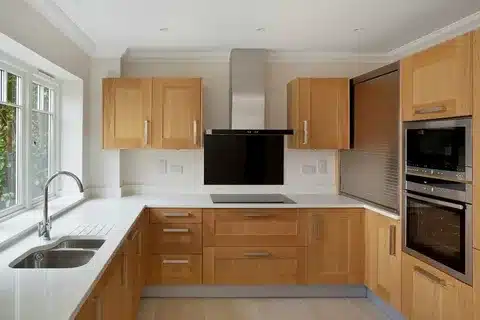How Do You Fix Steam Damage Kitchen Cabinets
Introduction
How Do You Fix Steam Damage Kitchen Cabinets: Steam damage to kitchen cabinets is a common issue faced by many homeowners. The kitchen, being a central hub of daily activity, often sees its fair share of humidity and heat, which can result in unsightly and detrimental effects on the cabinet surfaces. Whether it’s from cooking, dishwasher steam, or a lack of proper ventilation, the moisture can lead to peeling, warping, discoloration, and even mold growth, compromising the aesthetics and structural integrity of the cabinets.
Addressing steam damage promptly is crucial to prevent further deterioration and preserve the beauty and functionality of your kitchen. In this guide, we will explore various effective methods to fix steam damage on kitchen cabinets. From simple DIY solutions to seeking professional assistance, understanding how to combat this issue will empower homeowners to maintain their cabinets in top-notch condition.
While some steam damage might necessitate minor repairs that can be easily managed at home, more severe cases may require a skilled hand. By following the appropriate techniques and adopting preventive measures, homeowners can safeguard their kitchen cabinets from future steam-related harm and extend their lifespan. Let us delve into the step-by-step procedures and expert tips to restore the pristine condition of steam-damaged kitchen cabinets, helping you revitalize the heart of your home with confidence.
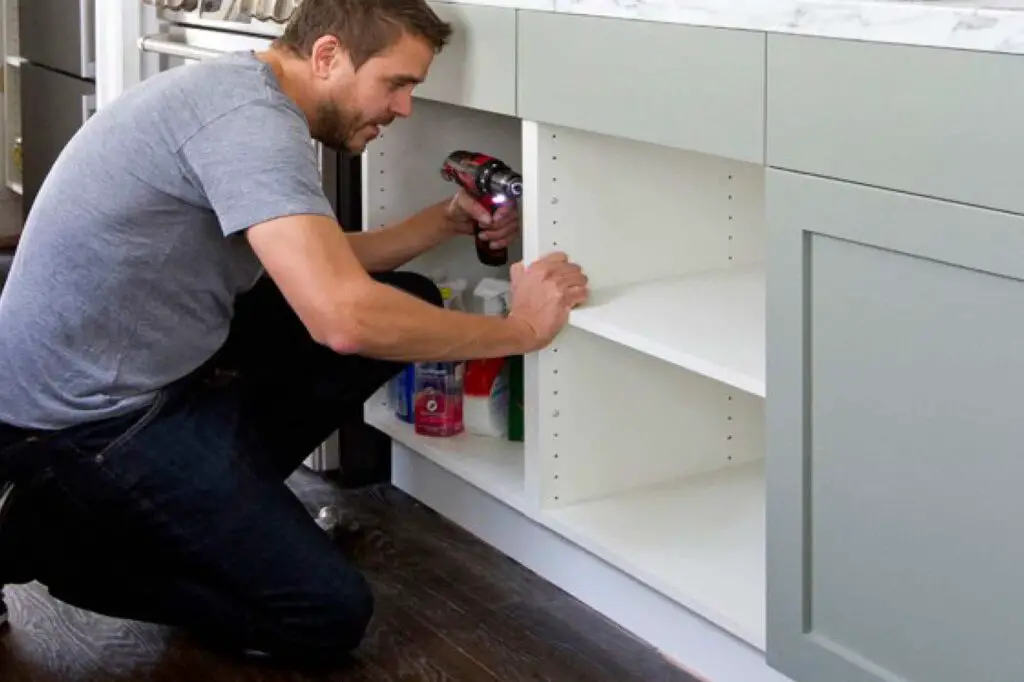
How do you remove smoke damage from kitchen cabinets?
To Repair or Replace? Smoke Damage Kitchen Cabinets – MYTHDHR
Choose a potent cleaning agent like TSP (trisodium phosphate) to clean soot off the walls, shelves, and cabinets. Also, clean your fridge’s condenser coils, rubber gaskets, appliance handles, and other kitchen hardware. Smoke odors linger long after a fire is out.
Removing smoke damage from kitchen cabinets can be a challenging task, especially if the cabinets are made of porous materials like wood. Smoke damage can leave behind stubborn stains, discoloration, and unpleasant odors, affecting the overall aesthetics and hygiene of your kitchen. However, with the right techniques and cleaning methods, you can effectively restore your cabinets to their former glory.
Cleaning Solutions: Start by preparing a gentle cleaning solution. A mixture of warm water and mild dish soap is often sufficient for light smoke damage. For more stubborn stains, consider using a commercial smoke residue cleaner specifically designed for wood surfaces. Avoid using harsh chemicals or abrasive cleaners, as they may further damage the cabinets.
Test in a Hidden Area: Before applying any cleaning solution, test it in an inconspicuous area of the cabinet to ensure it doesn’t cause any adverse effects on the finish or color.
Soft Cloth or Sponge: Use a soft cloth or sponge to gently apply the cleaning solution to the affected areas. Avoid scrubbing vigorously, as this can lead to surface damage.
Baking Soda
For particularly stubborn smoke odors, baking soda can be an effective natural deodorizer. Place an open box of baking soda inside each cabinet to absorb odors over time. Vinegar is a natural cleaner and deodorizer. Mix equal parts of white vinegar and water in a spray bottle, and lightly spray the interior and exterior of the cabinets. Wipe with a clean cloth afterward.
Activated Charcoal: Placing activated charcoal in the cabinets can also help absorb lingering smoke odors.
Ventilation: Ensure proper kitchen ventilation by using exhaust fans or opening windows while cleaning and after cooking to reduce the chance of future smoke damage.
Professional Restoration: In cases of severe smoke damage or when DIY efforts are ineffective, consider consulting professional restoration services. They have specialized equipment and expertise to thoroughly clean and deodorize smoke-damaged cabinets.
Repainting or Refinishing: If smoke damage has caused irreparable discoloration or damage to the cabinets, you may need to consider repainting or refinishing the surfaces to restore their appearance fully.
Remember, tackling smoke damage on kitchen cabinets requires patience and care. Regular maintenance and timely cleaning can help prevent extensive damage and ensure your kitchen remains a pleasant and inviting space for years to come.
How do you fix water damaged kitchen cupboards?
Water-damaged cabinets aren’t necessarily salvageable. Chipboard cabinets are more likely than solid wood cabinets to come apart because water weakens the glue. No quantity of glue will save them until they begin to crumble. The only way to fix this is to take out the broken cabinets and replace them with new ones.
Water damage from leaks, spills, or extreme humidity can cause warping, mold growth, and discoloration if left untreated.
Determine the amount of kitchen cupboard water damage. Cleaning water spots and stains using vinegar and water or a gentle soap solution can work. Dry the area properly to avoid dampness.
To smooth out water damage like swollen or warped wood, sanding may be needed. The cupboards can be refinished with paint or wood stain after sanding to cover the damage and add protection.
Professional help is recommended for significant water damage that damages closet structure or produces mold. Professional contractors can inspect the damage, repair it, and prevent future water issues.
How do you repair water damaged wood cabinets?
A quick and simple fix for many cabinets with water stains is an application of paste wax such as Brimax paste wax, a blend of beeswax, carnauba and petroleum, or Harrell’s Jeco Wax Beeswax Blend. Using a clean cloth, apply the paste wax as directed and then wipe the cabinet surface to clean and shine.
Repairing water-damaged wood cabinets requires prompt and careful attention to prevent further deterioration and salvage the appearance and structural integrity of the cabinets. Whether the damage is due to a leak, spillage, or excessive humidity, swift action is crucial to mitigate the effects of moisture on the wood.
The first step in repairing water-damaged wood cabinets is to identify the extent of the damage. Inspect the affected areas for signs of discoloration, warping, or mold growth. Once the damage is assessed, remove any excess water or moisture using towels or a wet/dry vacuum.
Next, allow the cabinets to thoroughly air dry. Adequate ventilation is essential to prevent the growth of mold and mildew. If the damage is minimal, using a fan to circulate air can expedite the drying process.
After the wood is completely dry, sand the damaged areas gently to remove any roughness or water stains. Be cautious not to over-sand and damage the cabinet finish.
For more significant damage, consider using wood filler to fill in gaps or cracks caused by water exposure. Match the filler color to the cabinet’s natural shade for a seamless repair.
Does steam damage kitchen cabinets?
Steam is a powerful damaging source of both heat and water. This hybrid of nature is the result of extremely hot water having its chemical makeup altered until it changes form. Steam can burn, warp, discolor, and even melt lesser quality cabinetry if it’s not properly managed.
One of the primary issues caused by steam is the degradation of the cabinet’s finish. The heat and moisture can cause the finish to peel, bubble, or discolor, giving the cabinets an unsightly appearance. Additionally, prolonged exposure to steam can lead to warping or swelling of the cabinet doors and frames, affecting their structural integrity and functionality.
Moreover, steam provides an ideal environment for mold and mildew growth. When moisture lingers in the cabinet’s crevices and corners, it creates a breeding ground for these harmful microorganisms. If left unaddressed, mold can spread and cause health hazards and further deterioration of the cabinets.
The severity of steam damage depends on various factors, such as the quality of materials used in the cabinet’s construction and the level of ventilation in the kitchen. Cabinets made from low-quality wood or particleboard are more vulnerable to steam damage than those constructed from high-quality, moisture-resistant materials like solid wood or plywood.
What is a steam cabinet?
A steam closet functions as an at-home dry cleaning machine that removes stains without toxic solvents. Built for daily use and installation alongside your washing machine and dryer, these machines steam clean hard-to-clean items, reduce pet dander and allergens, and can be used for daily touch-ups.
A steam cabinet, also known as a steam oven or steam cooker, is a specialized kitchen appliance designed to cook food using the power of steam. Unlike traditional ovens that primarily rely on dry heat, steam cabinets utilize moisture to prepare a wide variety of dishes with enhanced flavors, textures, and nutritional benefits.
Steam cabinets work by generating steam within an enclosed cooking chamber, creating a controlled environment that retains moisture and heat. They offer several cooking options, such as steaming, baking, roasting, and even reheating food. The versatility of steam cabinets makes them a valuable addition to any modern kitchen.
One of the key advantages of cooking with steam is its ability to preserve the natural colors, flavors, and nutrients of ingredients, making it an appealing choice for health-conscious individuals. Steam cooking also eliminates the need for added fats or oils, resulting in lighter and healthier meals.
What are some preventive measures to protect my kitchen cabinets from steam damage?
To prevent steam damage, ensure proper kitchen ventilation by using a range hood or exhaust fan. Wiping down cabinets after cooking and avoiding excessive humidity in the kitchen can also help maintain the cabinets’ integrity.
Protecting kitchen cabinets from steam damage is essential to maintain their appearance and longevity. Implementing preventive measures can help prevent warping, peeling, and discoloration caused by excess moisture. Here are some effective steps to safeguard your kitchen cabinets:
Proper ventilation: Install a high-quality range hood or exhaust fan above the cooking area. These devices help to draw steam and excess moisture away from the cabinets, minimizing their exposure to damaging humidity.
Regular cleaning: Wipe down the cabinet surfaces regularly, especially after cooking or using the dishwasher. This practice removes any accumulated steam residue and prevents it from causing long-term damage to the cabinet finish.
Sealant and finish maintenance: Ensure that the cabinets have a well-applied sealant or finish that acts as a protective barrier against moisture. Regularly inspect the cabinets for any signs of wear or damage to the sealant and apply a fresh coat if needed.
Avoiding standing water: Be cautious about any water spills or leaks near the cabinets, as standing water can seep into the wood and cause irreparable damage. Address leaks promptly and dry the affected area thoroughly.
Humidity control: Consider using a dehumidifier in your kitchen, especially in areas with high humidity. Keeping the humidity levels in check can significantly reduce the potential for steam damage on your cabinets.
By incorporating these preventive measures into your kitchen maintenance routine, you can protect your cabinets from steam damage and ensure they remain in pristine condition for years to come. These practices not only enhance the aesthetics of your kitchen but also contribute to the overall value and appeal of your home.
Are there specific cleaning agents I should use to remove stains caused by steam damage?
For minor stains, a mixture of vinegar and water or baking soda paste can be effective. However, always test a small hidden area first to avoid any adverse reactions with the cabinet finish.
When it comes to removing stains caused by steam damage on kitchen cabinets, it’s essential to be cautious with the cleaning agents you use, as certain products may harm the cabinet finish or wood. Here are some safe and effective cleaning agents you can try:
Mild dish soap and water: A simple solution of mild dish soap mixed with warm water can be effective for removing minor stains. Use a soft cloth or sponge to gently scrub the stained area.
White vinegar and water: A mixture of equal parts white vinegar and water can be used to tackle more stubborn stains. Apply the solution to the stain, let it sit for a few minutes, and then wipe it off with a clean cloth.
Baking soda paste: Create a paste by mixing baking soda with a small amount of water. Apply the paste to the stained area and gently scrub with a soft cloth. Baking soda is slightly abrasive, so it can help lift stains without causing damage.
Isopropyl alcohol: For grease stains or tougher marks, dampen a cloth with isopropyl alcohol and gently rub the affected area.
Always test the cleaning agent on a small, inconspicuous area of the cabinet first to ensure it does not cause any adverse reactions or damage to the finish. Avoid using abrasive cleaners, harsh chemicals, or bleach, as they can strip the cabinet’s finish and cause permanent discoloration or damage. Additionally, refrain from using excessive water, as prolonged exposure to moisture can harm the wood and exacerbate steam damage.
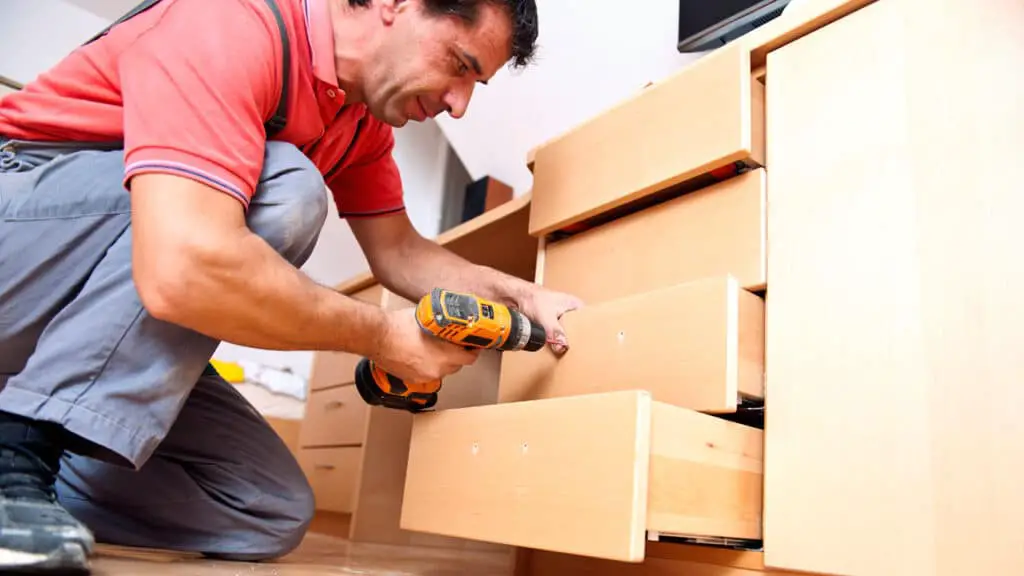
Conclusion
For minor steam damage, DIY solutions such as using a hairdryer to gently dry affected areas, employing vinegar or baking soda to remove stains, and applying a fresh coat of finish can work wonders. Regularly cleaning and ensuring proper ventilation in the kitchen are also essential preventive measures.
In more severe cases, seeking professional assistance from cabinet repair specialists may be necessary. They possess the expertise and tools to address extensive steam damage, including repairing warped wood, replacing severely affected sections, and tackling mold infestations.
Above all, prevention is better than cure. Installing a range hood or improving kitchen ventilation can significantly reduce the amount of steam reaching your cabinets. Additionally, wiping down cabinets after cooking and avoiding excessive humidity in the kitchen can go a long way in protecting your cabinets from future damage.
By implementing the appropriate methods and being proactive in caring for your kitchen cabinets, you can extend their lifespan and keep your kitchen space looking its best for years to come. A well-maintained kitchen not only enhances the overall aesthetics of your home but also ensures a functional and pleasant cooking environment for you and your family.



